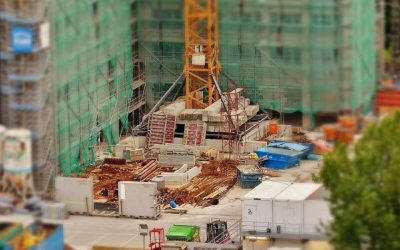Construction is one of the largest industries in the UK, employing over 9% of the British workforce. It’s also one of the most dangerous, with the Government’s Health & Safety Executive recording 39 fatalities on UK sites in the 2020/21 period of record.
Given the wide footprint of the industry, and the inherent dangers of working on dynamic construction sites,
What makes construction sites so dangerous?
There are many factors that make construction sites more dangerous to work in than offices, schools, and retail outlets:
- Heavy machinery being driven in all conditions
- Uneven ground/holes that change from day-to-day
- Large loads are hoisted in the air, suspended above operators
- Different teams working on different elements of construction simultaneously
We’ll list below the essential principles for ensuring that health and safety on a construction site follow best practices as laid out by the HSE and regulations. These include conducting thorough risk assessments, providing adequate training for all workers, implementing clear communication channels, and ensuring that proper equipment and PPE is readily available. It’s also important to regularly inspect the site for hazards and non-compliance. Just like home security basics, these practices are essential for maintaining a safe and secure work environment.
The best builders’ insurance will provide comprehensive protection against virtually every financial risk present on a construction site.
However, even with a successful insurance claim, you will still spend internal resources dealing with the claim that could have been used to generate money for your business rather than fighting the fire of compliance. That’s why it’s worth baking in these principles into the way you fundamentally do business.
Education & warnings
First of all, prominent and clear messages must be given to contractors and employees to remind them of the risks that they are taking in different areas of the site.
Signs are now commonplace on construction sites and are sometimes dismissed as an exercise of a construction firm ‘covering its back’ but they place an important role. Signs serve as a reinforcement of general best practice, as well as delivering information about new or changing dangers.
For example, a sign warning about the risks of electrocution near a newly installed power unit on-site may draw attention to this brand new risk that did not previously exist.
Collective responsibility
Firms should make clear to all that health and safety is a collective responsibility and is not a compliance activity performed by a few managerial personnel.
Risks can emerge minute-by-minute, which means that a centralised process for managing risk would be obsolete just a few moments after it was shared with a team.
Only the workers on the ground can identify all potential issues in play and take action to avoid unnecessary risks emerging.
By ensuring that all employees actively lookout for risks and bring them to the attention of others, we hope to avoid scenarios in which an employee noticed a dangerous situation but took no further action on the grounds that they thought ‘someone else would address it’. These explanations are often tragically an avoidable cause behind many fatal incidents.
High levels of visibility
The root cause of many accidents are incidents involving a worker being crushed by a vehicle or materials. This often occurs because the operator or plant, equipment, or vehicles was not aware of the proximity of another worker.
By ensuring that every site worker is dressed in highly visible clothing, we are reducing the number of scenarios in which a site worker may not be seen by another.
Protecting boundaries and the duty of care to visitors or trespassers
The civil law of Tort, regarding occupier liability, is a controversial area because current legislation and case law set out that occupiers of land have a duty of care not only to office workers and visitors but also to trespassers.
As a result, building sites should be highly secured with sturdy hoardings where possible to prevent access by an unauthorised member of the public.
- Joe Martin-Bindley Discusses The Best Ways To Buy Property To Let - October 15, 2024
- What Needs to Be Legally Disclosed When Buying a House: Essential Information for Homebuyers - October 3, 2024
- How Mastic Sealant Can Save Your Home from Damage - September 24, 2024



